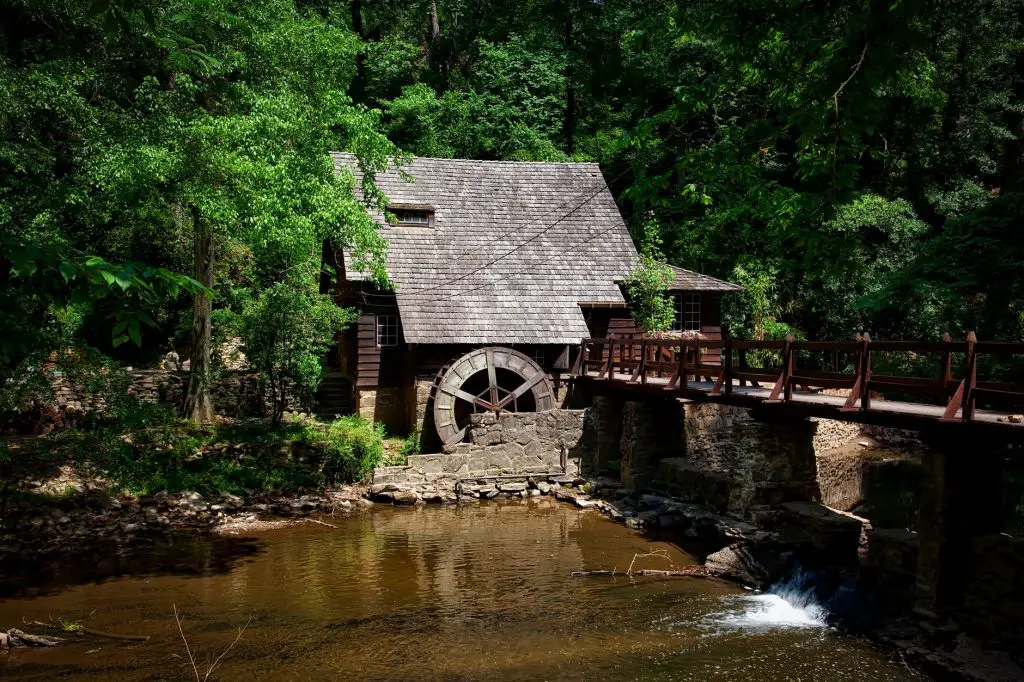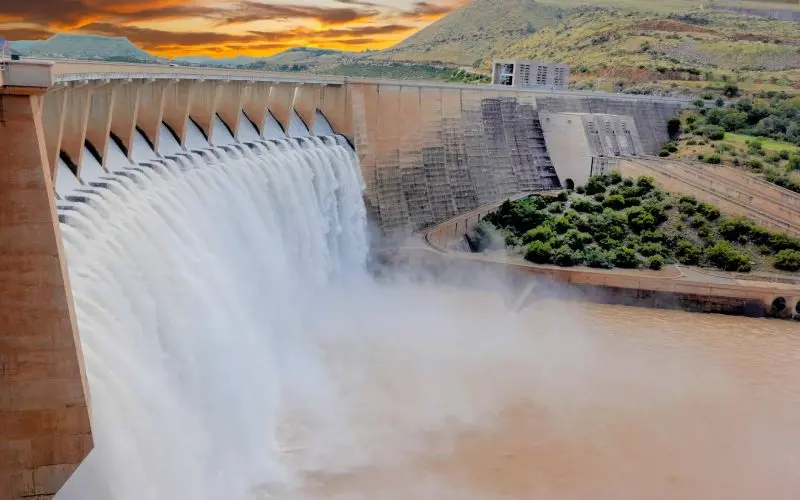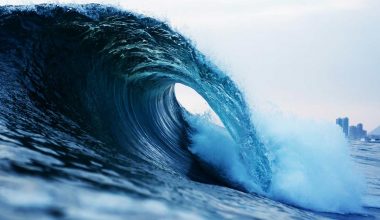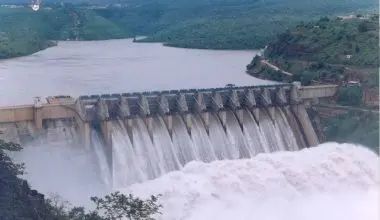Table of Contents Show
What is Hydroelectric Power?
It is simply generating electricity through the power generated from the moving water. The rivers and streams have very high power of water flowing and hydropower is one of the oldest energy-producing sources in the world.
According to National Geographic, Rudimentary form of hydropower was used in the ancient times. The first hydroelectric plant came to life at Niagara Falls in 1879. Just two years later, the city surrounding Niagara Falls had street lamps powered by hydropower. Nowadays, hydropower is restricted to dams only, as only dams have the proper ability to control the water flow. The water is directed towards the turbine which rotates to generate electricity. The electricity generated is sent to homes, businesses and factories.
20 fun facts about hydroelectric power (Hydropower)
1. One of the largest plants in the world is on the Yangtze River in China.
The largest producers of hydropower are Brazil, China, Canada, Russia and the United states. One of the largest plants in the world is on the Yangtze River in China. The dam is over 600 feet high and is 1.4 miles wide. However, the facility which generates the most electricity yearly is the Itapúa plant which is located on the river of Parana which flows through Paraguay and Brazil.
2. Hydro power can harm the environment
If a dam is placed upon a river; it has immense effects on the environment. Most importantly, it would affect the migration pattern of the fishes and can also lower dissolved oxygen present in the water. This affects the habitat to a great extent leading to habitat loss and destruction. In some dams, the reservoirs produce methane gas which emits into the atmosphere, causing further harm.
3. Hydropower can also be generated without a dam!
Some plants are so small in size that they can be situated near irrigation ditches. Many hydroelectric plants use diversions instead of a dam for the channeling of the water through a turbine. Plants which do not use a dam are called ‘low head hydropower’ plants whereas the plants which use the dam are called ‘high head hydropower plants’.
4. Every state in the US uses hydropower
Washington made over 30% of its energy in 2015 from Hydropower sources. More than 11 states saw 10% of their energy made from hydropower in the same year. 98% of renewable energy in America is produced by hydropower and around 7% of the total electricity produced in the United States was by hydropower plants.
5. Hydroelectricity is the best in emergency situations
Hydropower can prove to be very helpful during major electricity blackouts. These plants can also be helpful in sending the electricity back to the grids immediately. They can easily give backup power. They can quickly start running from zero power to generate their maximum output which makes them great for backup purposes.
6. Hydropower is generating energy across the globe
16% of the World’s total electricity comes from hydropower plants. Brazil, China and the United States are some of the world leaders in producing hydroelectricity as mentioned earlier. In 2018, 21.8 Giga-watts of electricity generation capacity was obtained from hydroelectric power plants. It was recorded that 4200 terawatts of electricity was produced in 2018 throughout the world.
7. Hydropower is considerably better than fossil fuels
Hydropower plants produce less pollution and contribute more towards lowering emissions of greenhouse gases. It has low maintenance and operational costs when compared with other methods of producing electricity.
8. Norway makes almost all of its energy from hydropower
Norway is considered the seventh largest producer and user of hydropower energy and is the largest in Europe. 96% of the nation’s energy is produced by 20 hydropower plants. One of the hydropower plants alone produces so much energy to power the capital city of Oslo throughout the year.
9. Hydropower has drawbacks as a renewable resource
It is usually seen as more viable than wind and solar energy but hydro power is very dependent upon water runoff and rain which can lead to many problems. A major problem associated with hydropower plants is that it can cause droughts in the area where hydropower plants are installed, especially if the dam starts holding water. This can lead to major economic repercussions for family farmers downstream. In lower elevations it can raise the risks of flood and it might cause conflicts between the communities living around the area of the plant.
10. Further Hydropower development may be difficult\ Expensive
There are many rules and regulations when it comes to the hydropower industry. It is a tricky business to construct more hydro power stations due to many location and environmental assessments. The startup costs of hydropower plants can exceed billions of dollars. Therefore, it is hard for third-world and developing countries to build hydropower stations.
11. Hydropower is extremely efficient
The best fossil fuels covert around 50% of energy into electricity, whereas hydropower turbines are 90% efficient. Over the years, the cost of making a hydropower plant grew less than inflation which makes it relatively economical.
12. Most dams don’t have a hydropower purpose
It is believed by many people that dams are built for the project of hydropower, but most of the dams do not produce electricity. Most of the dams are used for water treatment, flood control and irrigation.
13. Small(micro) hydropower technology is becoming popular
To reduce environmental impacts, many researchers are moving forward to construct small hydropower plants which do not require dams to work. These small hydropower plants consist of compact turbines and are also very cost-efficient when compared with a proper hydropower plant.
14. Hydropower has been around for centuries
In the 1700s, the modern hydropower plants began to evolve from conventional ‘water wheels’. When alternating current was invented, that led to the construction of hydropower plants. In 1771, hydropower energy was used to spin cotton at the very start of industrialization.

15. Hydro power has a strong future in Alternative energy resources
Many scientists and world leaders think that hydropower is a very strong renewable resource for the future. Hydropower enjoys the throne for the most established research and infrastructure when compared with other fossil fuel alternatives.
16. Micro-hydropower plants generate 5 to 100kW of power
It is basically a term used for the hydropower plants which have the capacity to generate below 100 KW of power. They can be used in a small community of isolated homes. Mostly, developing countries use such hydropower plants to use economical solutions to generate power.
17. Pico- hydropower plants generate below 5kW of power
Like micro-hydropower, Pico-hydro is also a term, but the energy output of Pico is far less than micro-hydro. Pico hydro generates around 5 KW of energy which is usually used by small remote communities or houses alongside a river. The uses for pico-hydro can be to power a few light bulbs, a radio or a TV; basically an average-sized home. Pico-hydro is a better replacement of a small generator which uses petrol.
18. Entire villages need to relocate for dams to be built
Hydroelectric dams require huge areas to be dedicated for them, which causes people or the communities living there to relocate. According to a study in 2000, it was stated that 40 – 80 million people have been relocated because of dams worldwide.
19. Prevents toxic gas emissions (Including green-house gases)
The flue gas emissions formed by fossil fuel combustions are eliminated by hydroelectricity. The pollutants from fossil fuels include nitric oxide, sulfur dioxide, dust, carbon monoxide and mercury which is present in coal.
20. Reservoirs can be used for other purposes as well!
The reservoirs created for dams are often used for water sports and are an attraction for many tourists. They even help in agriculture, as the water can be used for irrigation. Fishing industry also benefits from dams. Many large dams even control floods.
Many readers as us to make a concise list of the facts we find out so here is a summarized list:
- One of the largest plants in the world is on the Yangtze River in China
- Hydro power can harm the environment
- Hydropower can also be generated without a dam!
- Every state in the US uses hydropower
- In emergency situations, hydroelectricity is the best!
- Hydropower is used across the globe
- Hydropower is considerably better than fossil fuels
- Norway makes almost all of its energy from hydropower
- Hydropower has drawbacks as a renewable resource
- Further Hydropower development may be difficult\ Expensive
- Hydropower is extremely efficient
- Most dams don’t have a hydropower purpose
- Small(micro) hydropower technology is becoming popular
- Hydropower has been around for centuries
- Hydro power has a strong future in Alternative energy resources
- Micro-hydropower plants generate 5 to 100kW of power
- Pico- hydropower plants generate below 5kW of power
- Entire villages need to relocate for dams to be built
- Prevents toxic gas emissions (Including green-house gases)
- Water reservoirs can be used for purposes other than hydropower as well!


